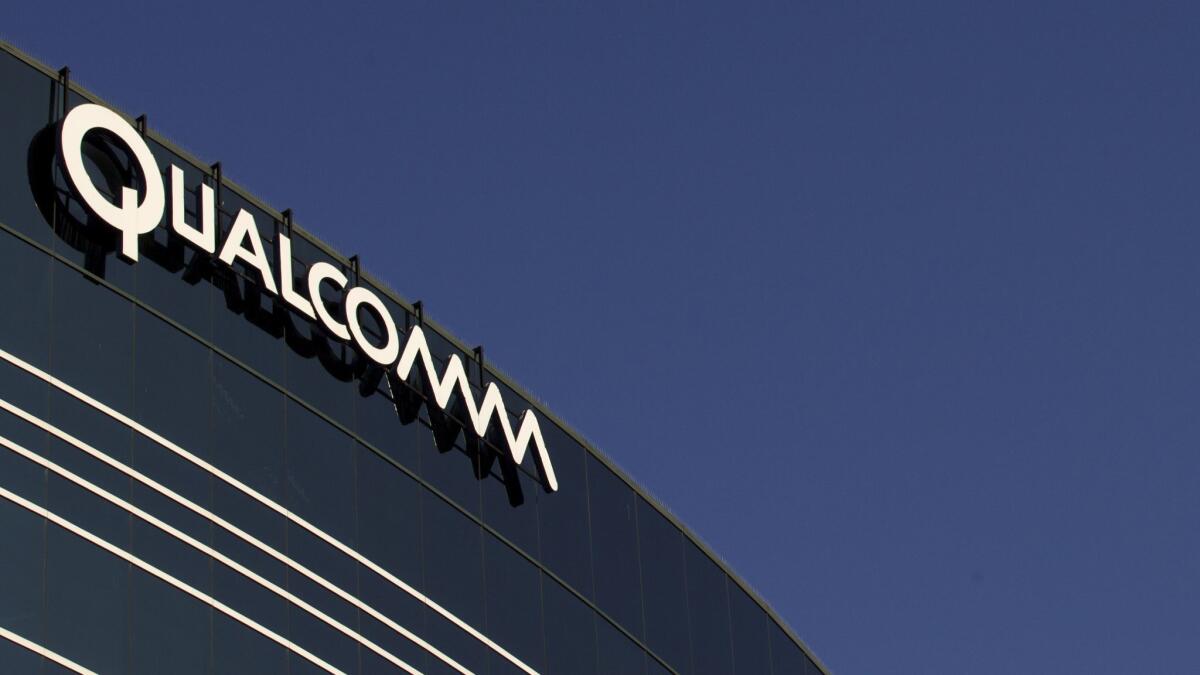Will Trump come to Qualcomm’s rescue again?

President Trump may be about to do Qualcomm Inc. another huge favor.
On Sunday, Trump tweeted that he was working with his Chinese counterpart to ensure that ZTE Corp. doesn’t go under, weeks after the U.S. Commerce Department banned sales of key technologies to the Chinese maker of telecommunications gear.
The move signaled a calming of the tensions over trade between the world’s two biggest economies. By Monday morning, Chinese regulators restarted their review of San Diego-based Qualcomm’s $44-billion acquisition of NXP Semiconductors NV. It comes not a moment too soon.
NXP has set a July 25 deadline for completion of the deal, originally announced in October 2016. In the meantime, uncertainty about the Dutch chipmaker’s future has enabled rivals to gobble up market share.
The identification and security business — which includes chips for bank cards and mobile payment products — is a case in point. Sales in the industry, which has a relatively short order turnaround, are declining. But NXP has borne the brunt, with revenue there falling 29% to $523 million last year. Meanwhile, rival Infineon Technologies AG’s business enjoyed a slight increase in sales over the same period.
That augurs particularly badly for the automotive market, where NXP is the market leader. A slew of carmakers aim to deploy partially autonomous cars in 2020 or 2021, meaning they are probably ordering the necessary components from suppliers about now.
Qualcomm will most likely have to offer concessions such as technology licensing or unit divestments to secure the NXP deal. Uncertainty around that process will also be an opportunity for Infineon, STMicroelectronics NV, Texas Instruments Inc. and others to grab customers for sensor components, as well as the infotainment systems that will get more use in driverless cars.
It’s increasingly clear that Qualcomm needs NXP, which has a range of products for connected cars and factories. Qualcomm is dependent on smartphones for the lion’s share of its chip sales, and its money-spinning licensing business is facing pressure from a lawsuit spearheaded by Apple Inc., its biggest customer. It has also abandoned efforts to diversify by trying to loosen Intel Corp.’s dominant grip on the lucrative market for data-center servers.
If the deal were to fall apart, Qualcomm could turn to Xilinx Inc., Analog Devices Inc. or Microchip Technology Inc. The path for NXP is much less clear. It would pocket a $2-billion breakup fee, money which could boost a share repurchase program. But without Qualcomm’s distribution channels and willingness to invest heavily in research and development, NXP would be left in a far weaker strategic position.
Qualcomm’s share price rose 2.7% to $56.74 on the news. NXP’s stock price jumped 12% to $110.74.
Trump stepped in before to kill Broadcom Ltd.’s unsolicited takeover bid for Qualcomm, with the San Diego firm outspending Broadcom hundredfold on Washington lobbying in the lead up to that decision. If China does approve the NXP deal, Trump will once again have done the companies a huge favor.
Webb is a columnist for Bloomberg.
More to Read
Inside the business of entertainment
The Wide Shot brings you news, analysis and insights on everything from streaming wars to production — and what it all means for the future.
You may occasionally receive promotional content from the Los Angeles Times.










